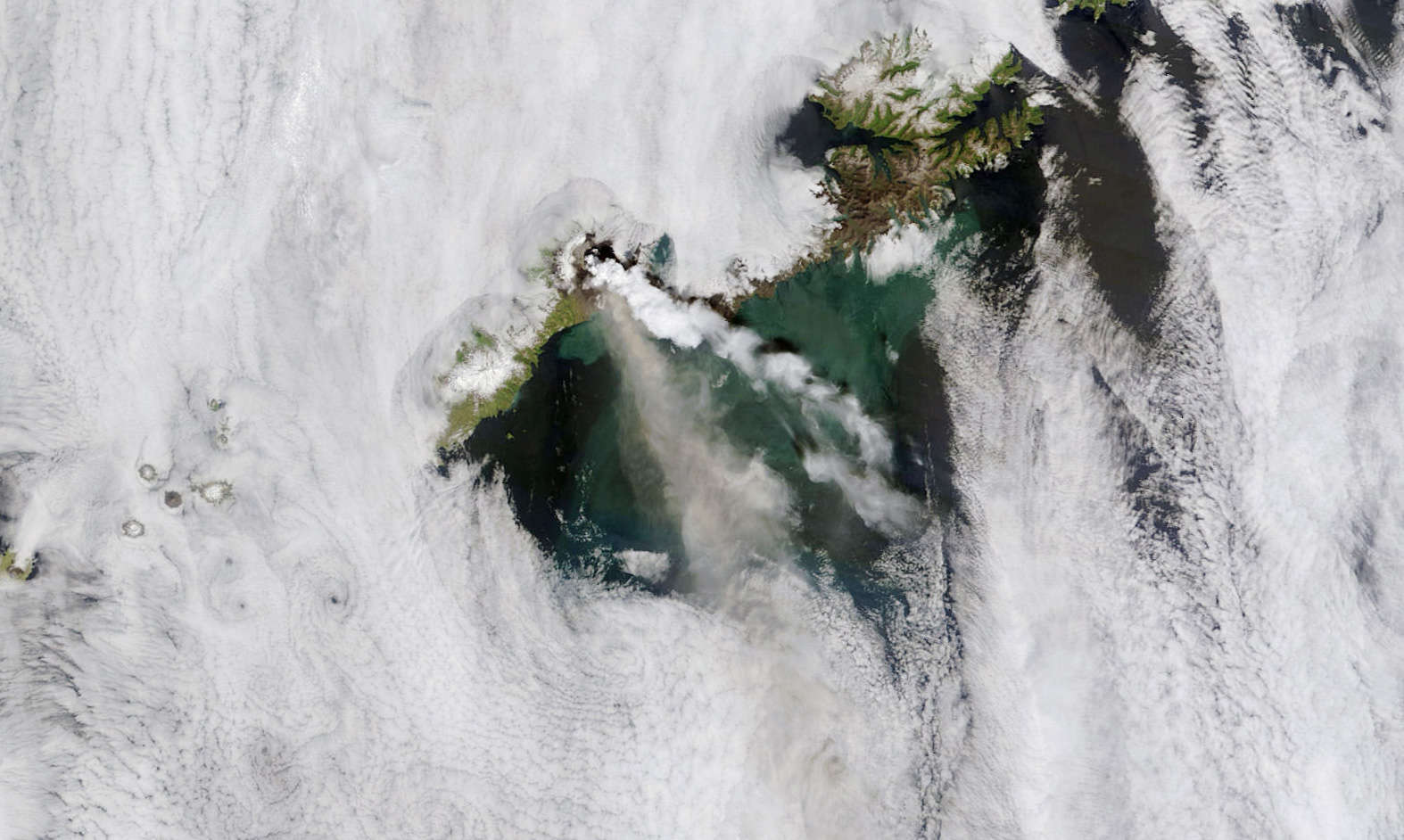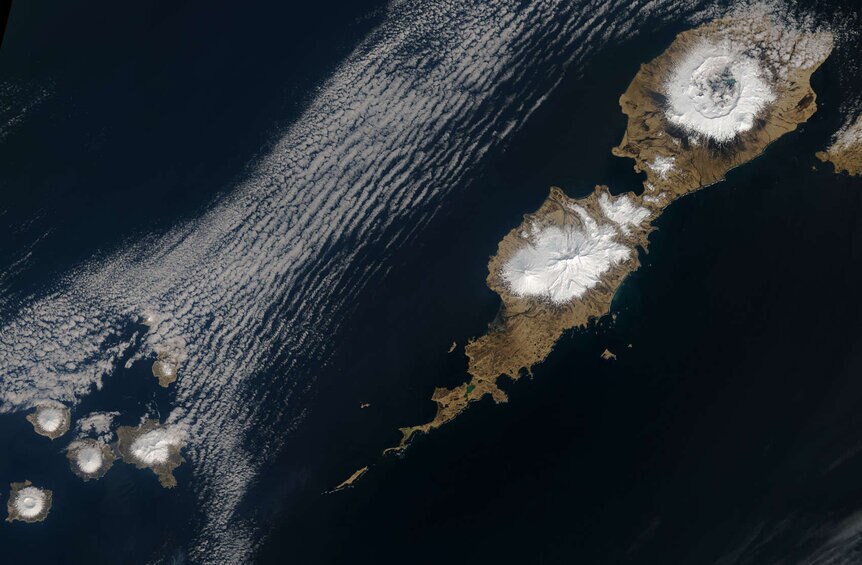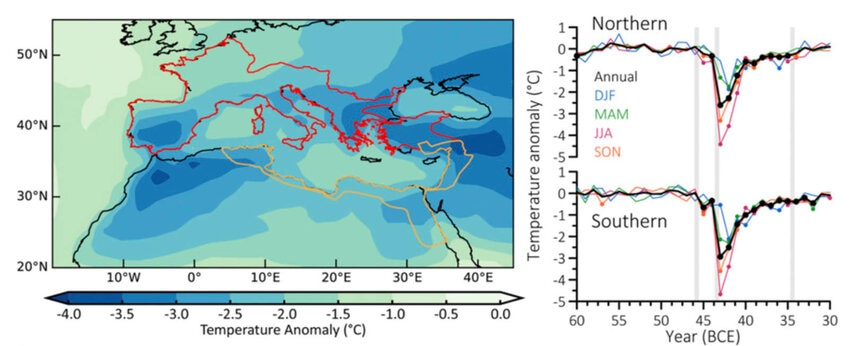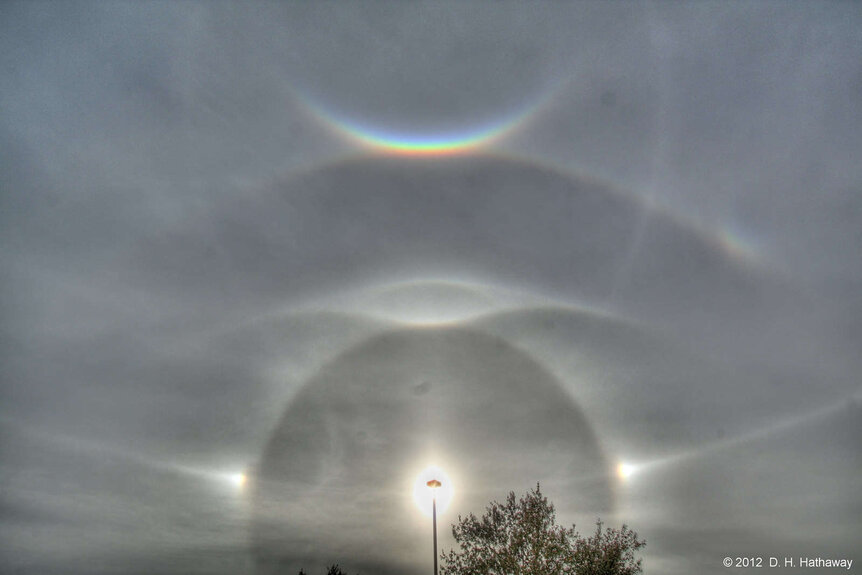Create a free profile to get unlimited access to exclusive videos, sweepstakes, and more!
Et tu, Vulcan? A volcanic eruption marked Julius Caesar's death with climate disaster

Who dare say the Sun is false?
-Virgil, remarking on ill portents after Caesar's assassination
On the Ides of March, in the year 44 BCE, Julius Caesar was assassinated, stabbed by members of his own Senate. The Senators thought he was trying to amass too much power, wanting to declare himself king of Rome. A series of political missteps on his part exacerbated the climate against him, and the rest, well, is history.
After he was killed, Mark Antony, co-consul of Caesar, tried to hold the Republic together, but in the end was defeated by Octavian, Julius's son, who declared himself Caesar Augustus, Emperor of Rome. The Republic fell, and the Roman Empire began.
As if to mirror the events on its surface, the interior of Earth rumbled with discontent at that same time. It's well known that in and around the Mediterranean the summer following the assassination was fraught with climactic disaster; it was unusually cool and dark during the day, crops failed and rivers flooded, causing wide spread famine and disease.
Geologists have long thought that a volcanic eruption was behind these more natural events, but had not been able to determine from where. New research by an international team of scientists has pinpointed what they think is the location of the catastrophe: The Okmok volcano located in the Alaskan Aleutian Islands.
The volcano is immense, with a caldera over 9 kilometers across and a kilometer high, dominating the island of Umnak. The archipelago is all volcanic, and Umnak is the third largest island in it.
Using ice cores from Greenland and the Russian arctic, combined with temperature proxies and dates of historic events from the time, they conclude the volcano started a massive series of eruptions that lasted up to two years. It had a Volcanic Explosivity Index of 6, which the USGS describes as "colossal." The effects of this were global, causing weather problems in the Mediterranean and as far away as China.
43 and 42 BCE were among the coolest years in the past 2500 years in the northern hemisphere, and that decade was among the coldest as well. Summer temperatures dropped by 3° C in Scandinavia, 2.5° in Austria and 2° in China (that last as measured using speleotherms, temperature-sensitive cave features). Trees rings in Europe also support this conclusion (growth is sensitive to climate, with thinner trunk rings when it's cooler). Long-lived bristlecone pines in the White Mountains of California, also show signs of very rare frost damage from that time, indicating below-freezing temperatures in September of 43 BCE.
The arctic ice cores contain tephra, bits of volcanic rock and ash, and analysis showed they are very chemically similar to reference tephra collected from Okmok. In fact, the chemistry was so similar they call the finding "nearly unambiguous." Sulfur in the ice cores also shows evidence of being affected by ultraviolet light, indicating it got as high as the stratosphere, high enough that UV light from the Sun could affect it. Volcanic material that gets that high has global effects, again supporting the idea this came from a distant volcano.
Historical records and documents talk about an unusually cool summer, which caused all sorts of crop failures in the region, including northern Italy, Greece, and even Egypt.
Confusing things a bit was a minor eruption from the local volcano Etna in 44 BCE. The researchers attribute some optical phenomena to that — haloes around the Sun, and parhelia, also called "sundogs," which are bright spots parallel to the Sun along the horizon, giving rise to a phenomenon called "three Suns" — but that's about it. This is on top of the much more drastic climactic effects of the more distant Okmok eruption.
Still, those optical effects can be seen as portents, and many writers of the time noted them along with the weather issues. This sort of thing, the researchers note, can lead to social unrest. They don't go so far to say as the eruption causing the fall of the Republic, but it may have played a role. Mark Antony teamed up with Cleopatra in a civil war against Octavian, but lost, securing the fall of the Republic and the beginning of the Roman Empire. It's possible that Egypt was weakened by famine from the eruption, making it less able to defend itself. The Egypt Ptolemaic Empire fell in 30 BCE when Cleopatra died, but it's possible the volcanically forced climate events took their toll as well.
There were effects on people from the crop failures, but it's difficult to pin any specific thing causing social changes. Still, the researchers feel that all this possibly "contributed to reported social unrest and facilitated political change at this important juncture of Western civilization." It's certainly something to consider.
We may think we've advanced since the days of the Roman Republic, but we are still under the thrall of vast forces under the Earth's surface. And Okmok still rumbles; it had an eruption as recently as 2008, spewing gas and ash up several kilometers into the air. We live on the Earth, but what lie beneath still makes itself known, and while we understand these forces better and can even predict them, perhaps minimizing some damage, we are as powerless as those who lived before us millennia ago to stop them.
"Men at some times are the masters of their fates," Shakespeare wrote in Julius Caesar. But in this case, perhaps, the lesser-known end of the quotation is more apt: "We are underlings."






























